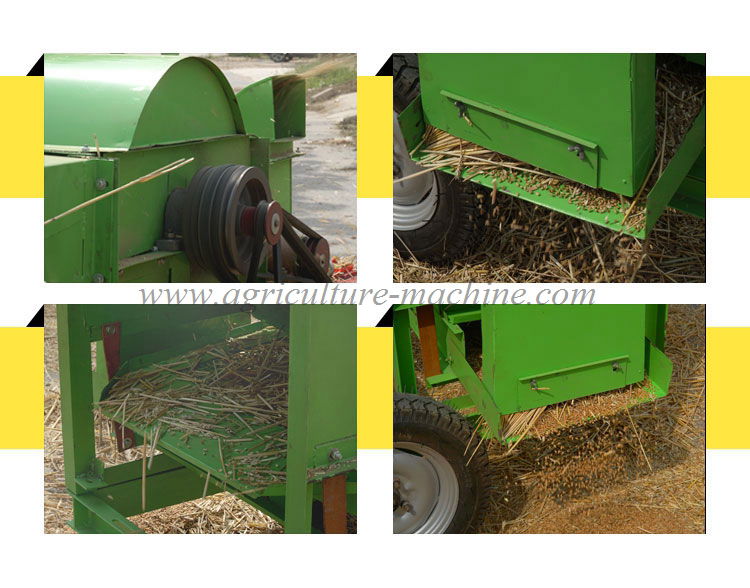Rice thresher machine daily inspection
(1) External overall inspection
Thoroughly clean the outside of the rice thresher machine, check that all fastening screws are loose, and that all parts are safe and open, welded or cracked. The feeding inlet shall have a safety shield. The feeding board shall have a safety warning sign and the length shall be not less than 30 cm.
(2) Inspection of test operation
After the threshing rotation, check the inlet for air leakage, and check the machine for abnormal vibration and fully lubricate as required. Look carefully for collisions, friction and stuck. There is no abnormal sound. The rice threshing machine was driven at a low speed by a power machine to observe the operation of each part.

(3) Inspection of the input device
The conveyor chain must be inspected section by section. If it is found that the wear is severe, the deformation and cracks should be replaced. The tension of the feed chain should be consistent. The middle of the chain length should be slightly in contact with the bottom plate. The main and passive axes of the conveyor chain should be parallel. If it is inclined, the cause should be excluded.
(4) Inspection of the clutch device
The safety clutch should be adjusted during the working process to check the degree of wear of the wave tooth. If the tooth height is 1/3, it should be replaced.
(5) Inspection and adjustment of threshing device
The speed of the drum should vary with the threshing crop. Generally, the wheat is 1500 rpm, and the soybean and sorghum are 800 rpm. The drum should be flexible to rotate, without obvious inter-axis pulsation, and the radial runout should not exceed 1.5 mm. The high wear of the pattern should not exceed 50%, and the wear of the nail working part should not exceed 1/4 of the original size, and the fixing of the rod or the nail should be checked. The tightening torque of the bolt is 40-65 N·m; the deformation degree of the stud is not more than 1 mm in total length. If deformation or crack is found, it should be replaced, and welding repair is not allowed. The threshing gap is determined according to the different crops. First adjust the entrance clearance, the gap should be consistent.
(6) Inspection of the grain cleaning device
Check that the screen frame must be free of deformation, open welding, damage, no tearing or clogging on the screen surface, and the skateboard should be smooth. The angle of inclination of the screen surface and the position of the fan windshield can be ideally adjusted according to the degree of grain cleaning. Equipment such as grain lifting, re-extraction, and awning can be adjusted according to the working conditions.
(7) Correct adjustment of the threshing gap
The gap between the drum and the concave plate depends mainly on the structure type, technical state and the cropping condition of the rice thresher. The principle of adjustment is: take the premise of being clean, and try to use a large gap, so that good degranulation quality can be obtained, productivity can be improved, energy consumption can be reduced, and the drum can be blocked. Note: The gap can be adjusted once and for all, and should be adjusted at any time depending on the crop type, variety, humidity, maturity and threshing quality requirements. The gap from the feed inlet to the grass outlet is gradually reduced from large to small. The gap between the weeds should be uniform, otherwise it will affect the quality of threshing.



